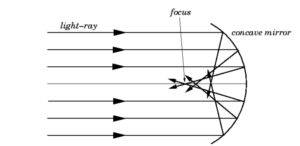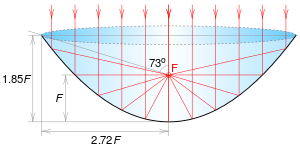As stargazers and astronomy enthusiasts, one of the most significant variables we encounter is the quality of our telescope. The type of mirror used in reflector telescopes, often a choice between spherical and parabolic mirrors, influences our celestial observations. This article aims to provide a comparison between these two widely used mirrors in telescope optics and demystify the differences.
Understanding the Basics
What is a Mirror in a Telescope?
In a reflector telescope, the primary mirror plays a critical role. It collects the incoming light from celestial bodies and focuses it to create a magnified image for the observer. The shape of this mirror, whether spherical or parabolic, significantly impacts the quality and clarity of the resulting image.
Spherical Mirrors: An Overview
Spherical mirrors, as the name suggests, have a spherical shape. They are a portion of a sphere and can be either convex (bulging outward) or concave (curving inward). In the context of telescopes, we primarily deal with concave spherical mirrors. These mirrors magnify the image, but because of their spherical nature, the incoming parallel light rays do not converge at a single focal point, resulting in a less sharp and slightly blurred image.

Parabolic Mirrors: An Overview
On the other hand, parabolic mirrors have a parabolic shape, enabling incoming parallel light rays to converge at a single point. This unique property provides a sharper, more focused image compared to spherical mirrors. However, they do present their own set of challenges, including a higher manufacturing cost and the occurrence of an optical aberration known as coma.

Delving Deeper: How Spherical Mirrors Work
Concave Spherical Mirrors
In reflector telescopes, concave spherical mirrors are used to magnify the image. However, due to the spherical nature of these mirrors, incoming parallel light rays do not focus at a single point, resulting in a less focused and slightly blurred image. This is particularly noticeable when the mirror’s circumference is large.
Convex Spherical Mirrors
Convex spherical mirrors, on the other hand, reflect light rays outward in all directions or toward a single direction. These mirrors are commonly used in car mirrors or security mirrors to make objects appear closer than they are, often resulting in a fisheye-like image.
Analyzing the Advantages and Disadvantages of Spherical Mirrors
Spherical mirrors bring both advantages and disadvantages to the table. On the positive side:
- They are relatively easy to manufacture.
- They are less expensive due to simpler manufacturing processes.
- They are less prone to manufacturing errors.
On the downside:
- They lack a single, fixed focal point when the mirror’s circumference is too large.
- The brightness of a celestial object can be compromised.
- Images can be distorted due to spherical aberration.
- They can have issues with diffraction.
Understanding the Functioning of Parabolic Mirrors
Unlike spherical mirrors, parabolic mirrors have a distinct design that allows incoming parallel light rays to converge at a single point. This design results in a more focused and sharper image. However, parabolic mirrors also suffer from an optical aberration called coma.
Weighing the Pros and Cons of Parabolic Mirrors
Parabolic mirrors offer several advantages:
- They produce a more focused image.
- They do not suffer from spherical aberration.
- They are ideal for a wider viewing experience.
- They produce more light than a spherical mirror.
However, they also have their own set of disadvantages:
- They suffer from coma.
- They are more expensive to produce.
Spotting the Differences Between Parabolic and Spherical Mirrors
While both types of mirrors are used in telescopes, they present distinct features. Spherical mirrors are cheaper to produce and are often found in less expensive telescopes. However, they suffer from spherical aberration, which can impact the image quality. On the other hand, parabolic mirrors provide a more focused image and do not suffer from spherical aberration but are more expensive to produce and can suffer from coma.
Without removing the mirror and running specific tests with expensive test equipment, the star test is probably the best way to answer that question. If nothing else, performing a star test will make sure that your collimation is as good as it can get which is even more important than your mirror type.
A general rule of thumb is that the smaller and less expensive a telescope is, the more likely it is to have a spherical main mirror.
The Final Verdict: Which is Better and Does It Matter?
Most people who ask this question are people buying budget telescopes and are “spec hunting”, trying to get the best specifications for their dollar. The problem with this is that a person with a good spherical mirror, in a nice telescope, with excellent collimation and very good eyepieces will get a much better view than someone with a parabolic mirror in a cheap telescope who doesn’t really know how to collimate their telescope and uses cheap eyepieces.
In other words, the type of mirror in your telescope is just one factor among many, and probably one of the factors you can not really do much about.
My suggestion is to buy a reasonable telescope from a name brand like Celestron, Sky-Watcher, Orion, etc, learn to collimate it well, allow it to acclimate completely before using it, and buy reasonably good eyepieces. Doing this will have far more impact on the quality of your viewing than holding out for a parabolic mirror.
